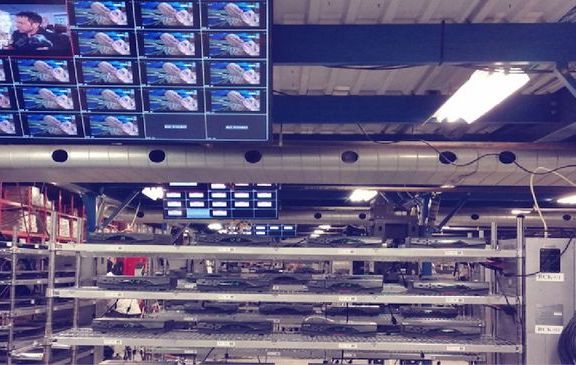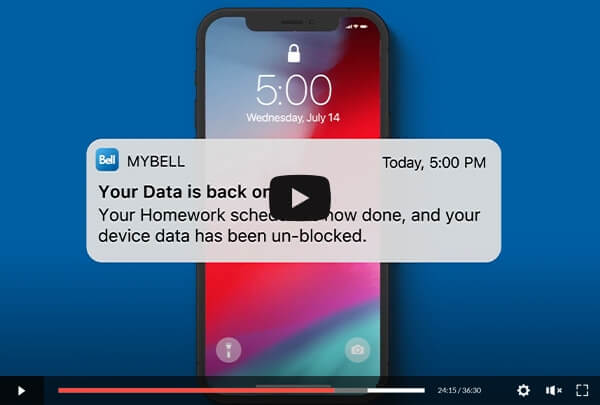Big Data to Identify Key Parameters for one of Canada’s Largest Fleet Tracking Companies

1. Challenges In the fiercely competitive Canadian telecom market, our client, a leading device manufacturer, faced the daunting task of consistently delivering high-quality devices that resonated with the dynamic preferences of modern users. With a strategy pivoted on frequent device launches, the challenge was twofold: ensuring each device was seamlessly compatible with the diverse Canadian telecom services and guaranteeing optimal performance, especially as AI-driven applications became integral features on these devices.2. Approach To navigate these challenges, a strategy that melded traditional methods with AI-driven enhancements was formulated. The primary objective was to guarantee device quality and performance across all Canadian Tier-1 Operators. An AI-driven analytics system was proposed to keep a real-time pulse on device performance. By harnessing expertise in Device Certification, Field Network, Live Production, and R&D Lab, and integrating AI algorithms, the system was architected to preempt potential performance bottlenecks and compatibility issues. The AI models were trained on vast datasets, sourced from diverse device usage scenarios, ensuring a comprehensive pattern recognition approach.3. Solution The strategy, which seamlessly blended traditional methods with AI innovations, was set into motion. By leveraging expertise across various domains like Device Certification, Field Network, Live Production, and R&D Lab, the team forged a close collaboration with the manufacturer’s R&D units. An AI-driven analytics system was rolled out to monitor and analyze device performance in real-time. This system employed machine learning algorithms that were trained on diverse datasets, ensuring a holistic pattern recognition approach. Techniques like Transfer Learning were utilized, where pre-existing models were fine-tuned to the specific needs of the manufacturer, enhancing accuracy while minimizing training time. Automated machine learning (AutoML) tools were deployed to fine-tune model parameters, ensuring peak performance without extensive manual intervention. To gain a deeper understanding of user experience and device performance, algorithms were crafted to analyze user feedback. This combined approach not only facilitated immediate root cause analysis but also offered predictive insights, enabling proactive measures to uplift device quality and performance.4. Success The AI-centric approach was a game-changer, allowing the manufacturer to debut two flagship devices across all Canadian Tier-1 operators ahead of schedule. These devices, fortified with AI-enhanced features, showcased superior performance, especially when running AI-centric applications. The real-time feedback mechanism became an invaluable tool for continuous improvement, ensuring devices were always in sync with user needs.
Integrating AI to ensure seamless delivery and compatibility of devices

1. Challenges Amidst a backdrop of declining customer engagement and feedback, our client, a major telecom company, grappled with outdated communication tools that failed to capture real-time sentiments of their vast user base. This communication lag meant that customer concerns often went unnoticed or were addressed belatedly, exacerbating dissatisfaction levels. The pressing need was to bridge this communication gap, ensuring that customer feedback was not just captured, but also acted upon promptly and effectively.2. Approach To tackle these challenges head-on, a deep dive into the problem was initiated. The strategy revolved around the creation of a comprehensive platform that included APIs, a web portal, and native SDKs. The web portal was envisioned to be user-centric, allowing authorized personnel to swiftly design, create, and dispatch custom survey forms. To further amplify the platform’s capabilities, an NLP-driven analytics system was integrated to monitor and interpret user feedback in real-time. Machine learning models, especially Deep Neural Networks (DNNs), were trained on diverse datasets to ensure a holistic pattern recognition and predictive analytics approach.3. Solution The outcome was a robust platform that comprised APIs, a web portal, and native SDKs. The web portal, designed for ease of use, empowered authorized staff to quickly design, create, and send out custom survey forms. Feedback data, collected via the SDK, was processed using NLP algorithms to extract insights and gauge sentiment from user responses. Predictive models, developed using TensorFlow and Keras, were deployed to anticipate potential issues based on historical data and current feedback trends. In situations where internet connectivity was compromised, the data was stored locally and later synchronized with the cloud service through APIs. This centralized data hub, augmented with AI capabilities, equipped teams to analyze reports, forecast potential challenges, and address concerns via the platform’s native push-notifications.4. Success Following the successful rollout of the AI-enhanced platform and mobile applications, company personnel were now equipped to design, create, and release surveys tailored to their target audience. The NLP-driven analytics offered profound insights into user sentiment, enabling real-time feedback on product launches and services, and bolstering business-customer engagement. The predictive models provided the company with a roadmap to proactively tackle potential issues, ensuring a frictionless user experience. The platform quickly became a preferred alternative to traditional feedback mechanisms, solidifying its place in the company’s communication arsenal.
AI-enhancing real-time customer engagement applications

Challenges A common issue enterprises often face when trying to scale their development teams (particularly when onboarding new developers) is that of maintaining quality and reliability. Developers often face a lot of friction in their day to day work when they end up spending time on non-productive activities that take their focus away from important development tasks they should be doing.Our client was facing exactly such a challenge: maintaining product quality and reliability along with scaling their teams and codebases. This was adversely impacting their customer experience as development teams were taking much longer to push releases and were spending a major portion of their time re-working on production defects, leading to a higher cost of development. For our client, the pace of technological changes demanded a higher degree of flexibility in the product development process.Some of the most significant worries for our client included high development costs and high defect rates in production. In addition to that, fragmented communication, longer time-to-market, and legacy systems failing to keep up in pace and quality with technological modernization were major bottlenecks arising from poor developer experience and reliability scores.Approach The scope of this project included persona creation, journey mapping, stakeholder research, qualitative and quantitative analysis of front stage and back stage processes, industry benchmarking, KPI identification and measurement, tools analysis, organizational training, and documentation.Recognizing that the first effort towards solving this problem was to understand where it stemmed from, we mapped the current experience of our client’s developers versus the desired developer experience. Ensuring we do this in a human-centered manner, our team first identified user pain points, their activities, and their experiences.From understanding the problem to providing solutions and recommendations, our team took a systematic approach to this through a 5-step process:Our ProcessUnderstand the Problem and Define the North Star User Interviews & Quantitative Survey Journey Map & Personas Industry Research Synthesis & Analysis 1. Understanding the Problem Workshops were conducted with the decision-makers and stakeholders to create a shared vision of the future. These were meant to align everyone on what the most important challenges were, what goals needed to be achieved on priority, and other “how might we” questions that needed to be answered.In our client’s case, the North Stars were defined as:Accelerating Digital Transformation == +Rate of change of Velocity for Developers Reduce the ‘logistical complexity’ Reduce friction in the system from concept to launch How might we remove friction from the developers’ work and help them focus on things they love most, i.e. developing amazing products? How might we enable developers to do their best creative work by taking away their pains (lego blocks, tooling, onboarding, setup, release, frictionless DevOps)? How might we improve the quality of code released by developers? 2. User Interviews We conducted 15+ individual developer interviews from diverse squads (front/back-end, design, QA, POs, DevOps).The focus of these discussions was on uncovering the current processes in place, challenges, and roadblocks, and providing suggestions and possibilities of how to overcome the identified challenges.Quantitative SurveyIn order to quantify our findings from the user interviews, we also conducted a survey with 40 participants answering 30+ questions from their day-to-day journey.3. Journey Mapping & Personas We used the findings from the user interviews and the survey to build a color-coded developer journey map and then used that information to convert it into personas for frontend and backend developers. This served as the guardrails for us to fully understand developer outcomes.These personas were also later helpful for evaluating the technology solutions against the developer outcomes.4. Industry Research We did an extensive review of the industry best practices to understand if the organizational challenges are aligned with the industry and how industry leaders are addressing these challenges.A competition analysis was conducted to evaluate the offering gaps and gather inspirations by studying precedents on similar initiatives and to evaluate DevX maturity relative to the industry.5. Synthesis & Analysis The final stage included crystallizing the raw data to uncover meaningful insights.These insights highlighted opportunities of improvement as well as what currently works well and should be leveraged further to strengthen the process.Our FindingsTo put our findings into clear context, we condensed them down to ‘Opportunity Themes’, based on which areas needed to be improved: Standardization, Environments, Documentation, People & Culture, and Processes were the opportunity themes we identified for our client.For each area of opportunity, we defined the Problem Summary, Areas of Improvement, and Recommendations.As part of the Recommendations, we highlighted Quick Wins for our client (to identify the low-hanging fruits that were quickly and easily achievable), provided a step-by-step Roadmap of the stages that needed to be covered (and what needed to be done at each stage), and finally, laid down the Next Steps.As a conclusion to the exercise, we proposed six experiments to help address the frictions identified in each of the areas to improve the overall developer experience.Success/ImpactThe key impact achieved as a result of our approach and solutions was a significantly enhanced developer experience. Hand-crafting an engaging experience for the developers by applying several steps that helped them focus more on coding rather than solving day to day issues was something that also helped increase the quality and reliability of code that developers wrote.Solving some of the biggest concerns for our client, our solution helped reduce the developers’ time-to-code, development costs, and defect rates.Clear documentation and protection of IP for properly documented frontstage processes and to avoid duplication of work Improved development velocity based on automation of backstage processes resulting in quicker deployment and faster launch Improved employee retention, satisfaction, and motivation resulting in lower stress and higher productivity Fewer production issues by significantly reducing technical debt, which built confidence in the improvement of customer satisfaction Clear and transparent communication by establishing a dashboard for to indicate the status of all stages of product development Organizational transformation and adoption of scrum ceremonies and discipline in backstage processes
Achieving DevX Maturity By Improving the Developer Experience

Challenges Frictionless customer experience is crucial for conversion in the eCommerce funnel, no matter the industry or vertical. However, telcos face a unique challenge of requiring customers to enter their service addresses in order to show eligible plans that vary or are determined by geographic location. Our client, one of the largest digital service providers in Canada was no exception.Approach Despite being a critical step to provide their home solution offerings, our client was facing a major drop in traffic during the service eligibility check and turned to us to design a solution to improve the customer experience while enhancing the overall browse-buy journey.The People: 1 Business System Analyst, 1 Design Lead, and 1 Designer. Problem Framing: The first step was to determine we were solving the right problems. Keeping the focus on the user, we conducted a series of problem-framing workshops in order to determine exactly why customers were dropping off at this point in the journey. We found:Customer Privacy Concerns.Customers can often be reluctant to disclose their complete address in this stage of their journey.Address Check Failures.System couldn’t auto-correct invalid addresses that customers may have accidentally entered, showing inaccurate results.Verification Takes Too Long.Addresses stored in backend databases lacked standardization, causing search failures and latency up to 26 seconds due to multiple queries in succession.Personas & Market Research: After analyzing several eCommerce experiences with an address input required in order to determine best practices around customer privacy, we discovered that several journeys started at the postal code and gradually asked for more information (progressive disclosure). We further found that user attitudes changed significantly when the ask was framed in the right context using appropriate UX copy and patterns. We also discovered that there is a tradeoff between Privacy & Security vs. Convenience & Accuracy for different customers.Lin: More concerned about privacy than process. Jessy: Prefers accuracy through auto-complete. Will: Checking eligibility from a different location. User Journey Mapping: In order to accommodate different user personas, we mapped out a flow diagram of their journey to help balance their competing privacy and convenience needs. This went on to serve as a guide for customer outcome discussions moving forward and allowed us to evaluate technology solutions against the customer outcomesConcept Ideation: In response to our findings, we developed a hybrid solution to address different customer needs that included automatic location via the browser, redesigned address acquisition journey starting with postal code, and postal code progressive disclosure for convenience and input accuracy.The result was three design concepts, Banner, Modal, and Enhanced Existing Layout, all with different experiences.Validation with Real Users: After defining test scenarios for recruitment and establishing remote testing channels, we began conducting tests with real users to compare the usability of our three concepts. We learned that:Most people feel more comfortable entering a postal code over their full address You can avoid price plan shock by incentivizing users for entering location information Modal design made users feel it was a “custom experience”68 Screens designed, 4 Design concepts tested and 8 End users remotely tested. Success/Impact Working with client teams, we developed a Proof-of-Concept (POC) to validate our concepts from the user experience and technology dimension. As a result, our solution demonstrated and was able to prove:We can simplify the service eligibility for users by automatically detecting location from the browser (based on consent) and removing friction in entering address through auto-complete feature Address privacy concerns by allowing users to only share partial address e.g postal code only Improvements in user experience and customer conversion rate by reducing latency through standardized databases and deploying flexible (microservice) architecture
Improving eCommerce Experience to Increase Customer Conversion

Challenge Our client was facing issues with hundreds of defects going into production and as we stepped in, we aimed to reduce those defects by taking control of the Omniture data governance process end to end, which not only helped Bell reduce defects but also made their analytics implementation future-proof.Inconsistent Tagging was a major challenge as Bell owns three native apps (My Bell, Lucky and Virgin), and inconsistent analytics tagging implementation was found between the apps. There was also a lack of documentation; we found that critical documents were not well organized, like technical specifications, BRD (Business Requirements Document) and SDR (Solution Design Reference). These documents act as a backbone for any analytics implementation. Another issue faced was the gap in technical knowledge; as per Analytics standards, QA wasn’t performed completely, due to which defects were rolling into production.Solution The solution to closing the gap of inconsistent tagging between apps was by reviewing the Implementation Guide (IG), making sure IG creators are following Bell’s standards and tags are consistent with historical data. This allows us to have easy reporting at the Omniture and BI level. Critical documentation was carried out, like SDR on the confluence page, so that the mapping of variables can be referred to by anyone in the organizations and provide them insights on the description of the variables and what values to expect in the same. This helps make strategizing analytics for projects easier in advance. Since Adobe Analytics is the source of truth for other data sources, an extra layer of validation was added at QA level to check if Omniture has received the data as expected, whereas before it was only validated via Charles logs, and Omniture reports were ignored.Success Consistent Tagging was achieved as a result of our solution. We also significantly reduced the number of defects rolling into production, and our solutions for proper documentation and easy reporting ensured that critical documents were organized and easily accessible. The overall analytics delivery process was streamlined.
Structured Native App Data Pipeline Through Insights on Data Leaks

Challenge A top Canadian mortgage company needed a partner to help digitally transform their mortgage process. Various compliance rules, financial regulations, product catalogue, brand and lender rules, and the manual third-party verification process had given the client a complex underwriting process. Their current system was not accurately factoring adjudication rules, requiring underwriters to manually assign products, investors, and applicable rates, adding significant time to their work. Looking to automate, the client wanted to improve the underwriting and decisioning process while improving CX and market standing.Solution In close collaboration with the client and their teams, we kept process automation, data management, and improving the user experience as the North Star of our solution. Auto-decisioning provided faster and more accurate mortgage decisions, while the adjudication engine improved the decision by implementing changing policies as business roles, optimizing the decision flow. Lastly, we designed an accessible and easy-to-use interface to manage business data internally, removing dependency on IT teams.Success 70% faster & more accurate decisions 87% reduction in Underwriter effort 60% reduction in onboarding new investors 50% increase in meeting SLA Removed IT team dependencies Once we replaced the legacy processing system with an intelligent decisioning system, the client could determine and assign the best mortgage loan based on borrower information, lender policies, business rules, rates, discounts, and premiums. We also enabled the business and product teams to facilitate investor management, rate, product and policy management with minimal outside dependency.
Transformed Mortgage Experience with an Intelligent Decision Engine

Created buying, upgrading, and price plan changing experience on digital channels Price Plan Changing Experience on Digital Channels Challenge The telecom operator needed to revamp their E2E Digital Experience across web, tablet, and mobile that is more intuitive with minimum clicks to complete the task. They also wanted to enable both their current and future business users with the capability of adding and editing content on its website without having to reply on IT assistance.end to end digital experience across devicesSolution Applying the Design Thinking approach, mobileLIVE dug deep into understanding the end users in context and the end-to-end journey. Several prototypes were created for rapid testing and validation across a real audience and all assumptions were revisited based on the feedback. To increase functionality and time-to-market, mobileLIVE also recommended revamping the existing technology stack and implementing a content model that would be independent of any presentation layer.Canadian telco digital app experienceSuccess mobileLIVE came up with a 3-step process whereas most optimized processes are considered to be 7-step activation flow. This not only decreased the number of components to be developed but as a more intuitive process, saw a reduction in the number of duplicate forms across multiple entry points. After revamping their existing technology stack and implementing a progressive web application and CMS, business users were able to manage content in a user-friendly editing interface. Site update time went from 2-3 weeks to as little as 30 minutes. The developers can now create engaging experiences all while improving performance and SEO.
Optimizing the Activation Flow & the End-to-End Digital Experience

“The differentiating factor in working with mobileLIVE is definitely the people. They leverage in-person meetings and whiteboarding sessions to ensure that all your requirements and needs are fully understood and catered to. With their years of development experience, they are able to screen and recommend top-tier candidates. Once engaged they take the time to monitor how things are going and address any issues in a prompt manner.“Jeremie Racine Sr Manager, Program Design and Delivery @ BellChallenge Bell’s current self-serve platform that included MyBell, Virgin, and PC Mobile lacked the flexibility to offer an optimal customer experience. A detailed assessment of their hybrid apps indicated a suboptimal customer experience and lower NPS.Solution It was recommended that Bell migrate the current hybrid platform to a native experience. It was also decided that the development of the new native app be brought in-house, and a partner be retained to assist with architecture, solutioning and development. mobileLIVE was selected to support the solutioning, architecture and development services under a Bell-led project for both Android and iOS platforms.Hybrid to NativeSuccess Hybrid to Native Team Enablement & Augmentation Reusable & Flexible Codebase Improved Customer Experience Significantly Increase NPS Through the Bell/mobileLIVE partnership, Bell’s project team has already launched two of the four apps with a much more reusable and flexible codebase. This resulted in a much-improved user experience and a significant increase in their NPS.
Top Talent Placement for Program Design & Delivery

Life can be difficult for children living with mental health issues and those who care for them. Keeping track of appointments, conditions, prescriptions, and other complex needs across a multitude of disconnected organizations, systems, and in many cases, pieces of paper are challenging. These were the same challenges felt by our client, a leading Mental Health Service Provider.Challenges Looking for a better, more efficient way to serve children living with a mental health diagnosis and those who care for them, our clients felt that the older technology platform they used wasn’t able to deliver on the experience their stakeholders deserved. They turned to us to improve the customer experience, operational excellence and government reporting while ensuring patient confidentiality.The People: 1 Project Manager, 1 Technical Architect, and 4 Designers Requirement Gathering: Working closely with the client to understand the unique needs of the different caregivers and the children in their care, our teams collaborated with internal stakeholders to map out workflows and back-office processes to simplify and create a better, more efficient user experience. To do that, we first had to address several of our client’s challenges:Disconnected Journeys.Unlinked processes across the client and care patient journey.Multiple Agencies and Platforms.Client’s process spanned across multiple organizations.Manual Processes.Client had to manually complete most of the care intake process.No Self-Serve Channels.Patients under care had no access to their information.Given the sensitive nature of child and youth mental health, this particular project required a more nuanced approach as there are intricacies that come with protecting children.User Research & Insights: Our focus shifted next to the users: the employees and their clients, mapping out their and other key stakeholders’ roles in the overall process.Personas were developed, the stakeholder map was elaborated on, and storyboards were co-created for the key processes.Based on the challenges, we determined product goals for the new design, brainstormed several solutions, and prioritized them for user-validation.Service Mapping: After we had a deeper understanding of the customer journey and the back-office processes, we created a service blueprint to shape the overall picture of the new solution we were designing. This was instrumental in visualizing and simplifying the interactions between stakeholders at each stage of their journey.Concept Ideation: In our progression from low to high-fidelity, we started with paper sketches that had features prioritized on business and user requirements. Then we digitized the sketches into block frames for a more concrete view of the interface before we sought agreement on concept frames and moved onto high-fidelity mockups, adapted to various screen resolutions.Prototyping: Having determined our client’s unique challenges, we were able to design a new user-centric Back-office and Client Portal.Together these unified crisis interventions and regular intake flow provided easy client/referral management. A central notification system provided a faster, more efficient workflow with better user experience and clear documented communication between stakeholders.Simplified Experience: Our redesign significantly simplified the workflow for caseworkers by reducing the time between tasks. The patient profile was discovered to be a common point for all tasks and the redesign took this into account, displaying all options relating to the patient within the profile view.The patient profile was discovered to be a common point for all tasks and the redesign took this into account, displaying all options relating to the patient within the profile view.350+ Screens designed, 10+ Co-Creation sessions and 4 Weeks from Chaos to Clarity Success/Impact Working closely with the client, our redesigned experience significantly improved the functionality of the product. This translated to greater user experience and value felt across all stakeholders. Together, and in just under a month, we designed:Cloud-based case-management platform Mobile responsive customer portal An efficient and simplified back-office system Our designs streamlined and simplified the workflow of caseworkers by establishing the client profile as a common point, keeping all related options and actions related to that profile in view of the user.
Better Experience for Customers and the Health Service Provider

The telecommunications industry is highly competitive with new entrants, and high customer churn is a big concern. Digital e-commerce and self-service channels play a significant role in acquiring and retaining customers at a lower cost. If a customer is unable to purchase a service or upgrade their device, their likelihood of switching to a competitor becomes high – leading to a lost opportunity and lost revenue. Therefore, having a frictionless digital experience is crucial for Telcos’s success, and our client, a large Canadian telecom, was no exception.Challenges With the holidays fast approaching, our large telco client was looking to capitalize on boxing day to drive eCommerce sales. However, their current online retail capabilities were severely limited as they were at an early stage of digital maturity. They needed a partner and a solution that would allow them to quickly scale up their online channel in a short time frame, improve the customer experience, drive revenue, and optimize costs through thoughtful and intelligent eCommerce capabilities.ApproachThe People: 1 Project Manager, 1 Technical Architect, and 4 Designers Requirement Gathering: The initial step was to gather requirements from the relevant stakeholders to determine how best to improve the purchase, and post-purchase customer journey by providing more functionality. They were essentially looking to reduce the load for customer care agents.Next, we prioritized the requirements based on:Business Value.What will increase the revenue of our client?Customer Value.What will provide a fantastic user experience?Time Investment.What can we accomplish in the alotted time?Personas & Market Research: To gain a better understanding of the key decision points for the users we created a Decision Tree:Collaborating with a cross-functional team consisting of Designers, Business System Analysts, and Project Managers, we successfully mapped out the customers’ journey. We then analyzed and optimized that journey, streamlining the critical decisions required to go from login to sale, skipping all unnecessary steps along the way.We then developed wire-flows for better visual storytelling and project alignment. This was a necessary step when setting out to determine what features were required.Feature Exploration: Simplified Login: Login pages experience a significant traffic drop in the customer journey for telecoms. For existing users, faster login significantly improves customer experience so we introduced social login as an alternative of typing in username and password.Connected Browse-Buy: To provide more transparency to the customer, we made their shopping cart a visible and persistent part of the bottom of their screens. This allowed customers to see the impact of plan selection and customization immediately. Progress bar was added to indicate progress and reduce cart abandonment due to perceived complexity.Photo ID Validation: Previously, new users couldn’t have their identity verified online, significantly limiting the commerce potential of new customers. We introduced digital photo ID validation, saving our client significant time by eliminating the need to visit a store physically.Bring Your Own Device (BYOD): Used to mitigate the expensive cost that was once associated with switching carriers, Bring Your Own Device, or BYOD, allows customers the freedom of number selection and SIM card activation, without the hassle of an instore visit or call to customer care agent. This also reduced the port-in costs for our client.Self-serve Dashboard: Adding another layer of transparency to the customer experience and reducing the cost of care agents, the self-serve dashboard allowed customers to know their usage of time, text messages, and data, as well as the ability to monitor and manage multiple lines within a single group.200+ Screens designed, 10+ new features added and 4 months from Concept to market Success/Impact It took 20 days to design a new user experience full of enriched features in both buy-flow and self-serve journeys. As a result:The integration with Contentful (CMS) enabled a simplified user flow with flexible customer entry points, significantly improving eCommerce functionality. Fast delivery helped the client not only catch up and capitalize on the holiday promotion but empowered their customer with the freedom to shop online. The implementation cost was offset by reusing major parts of the existing flow for certain use cases. A Progressive Web Application (PWA) and mobile-first approach provide the user flexibility on their choice of devices for plan/device selection and post-purchase activities. To put it briefly, our client received a cost-effective solution that was quickly turned around and has seen 10M+ accretive revenue generated to date.
Driving Sales & Improving Customer Experience Through Digital

Created a mobile-first, continuous and seamless customer journey Omni-channel experience for a canadian telco operator Challenge The telecom operator needed to modernize their online experience so that the customers could easily manage their wireless, TV, internet, and home services without the need to contact customer care or visit a retail location. The expectations set for the improved application included: it must support cloud infrastructure, allow teams to release new features, support two-way interaction so customers can report incidences and receive real-time notifications once resolved and most importantly, track customer’s journey across channels and touchpoints while identifying user pain-points to improve.mobile first experienceSolution In close collaboration, we developed and integrated a new application using an advanced technology stack enabling customers to Browse, Search, Buy, Self-Serve, and provide Feedback through web, tablet, and mobile. Billing and payment solutions were developed as per client standards and APIs were created that could easily be leveraged to cross-functional groups. An in-app message delivery system with push notifications and real-time analytics for business was also delivered.billing and payment solution in telcosSuccess Satisfying both customers’ and business needs, the solution not only proved cost-effective but significantly improved response time, customer engagement, and Net Promoter Score. The platform presents customers with personalized offers derived from analytics and the operator is now able to leverage their mobile platform to reuse and develop new mobile applications to support enterprise customers at a minimal cost.
Omnichannel Experience for a Large Canadian Telco

Streamlined device and software certification, shortened test cycles, and reduced time-to-market device testing Challenge As a relatively newcomer to the Canadian market, the company was looking to make a name for themselves. To ensure their devices meet a high standard of quality and performance, the manufacturer required streamlined technical acceptance, as part of their aggressive launch schedule.device and software certificationSolution Leveraging over a decade of experience with Tier-1 operators, we established a pre-certification approach and practice that had a significant impact with the manufacturer’s overseas R&D team, allowing them to not only deliver high quality software, but reduce delays and test cycles.user acceptance testing for device manufacturerSuccess By working in tandem during the development stage, mobileLIVE and the device manufacturer were able to streamline the time for technical acceptance and time-to-market. As a result, the company has successfully released 6 versions of their flagship devices and 12 software versions; all 100% on schedule with a total of 40% reduction in overall Test Cycle Duration.
Quality and Performance Testing for a Global Device Manufacturer

Created mobile and web applications that would help feed communities in need, reduce waste, and save money. Real-Time Order Management SystemChallenge The company needed revamping of their digital platform and building a new mobile/web application that would make donating food fast and easy. They required a platform that could track transactions at all levels and in real-time – from order and pickup through delivery. It had to be intelligent, utilizing Geolocation to automatically connect users as well as allow for corporations and event organizers to register through web and mobile to track their tax receipts and savings.Solution mobileLIVE designed and developed both the mobile and web application that intelligently matched excess food to local nonprofits. The solution provided real-time information on both food availability and its delivery, along with features like choosing pickup location, schedule, payment options, and allowing drivers to accept pickup requests. Customers could initiate pickup, save addresses, track completed, cancelled, and skipped requests while organizers and corporations could easily register and track their savings.food delivery app with geo location trackerSuccess As a result, mobileLIVE’s end-to-end solution was able to make donating food and helping the community easier, faster, and lucrative. The critical factor in donating food – time – was drastically cut; reducing wastage. Since completing the project, the company has seen more than 1 million lbs of food recovered, more than 900,000 meals delivered, 3.5 million lbs of CO2 emissions diverted and more than $10 million worth of food delivered to people in need.
Real-Time Order Management To Manage Food Waste

Created a unique experience to activate offer in the mobile app by “shaking” the device gesture activate feature in mobile app Challenge The telecom operator needed to build a self-serve mobile application within their flagship app to help boost customer activations, adoption, retention, and brand value. The app would provide users with the ability to monitor their voice, data and text usage, pay bills, and manage accounts in real-time as well as add additional data to their plans through a unique gesture experience.unique gesture experience mobile appSolution mobileLIVE utilized a delivery approach that allowed for parallel development across iOS and Android. A native application was developed that was decoupled from front and back ends with modular microservice architecture. A persistent login was generated using the user’s telephone number and PIN, along with user-friendly login options such as fingerprint ID and Facebook. To activate the additional data, users can “shake” their device, using this gesture to drive action and create a unique and memorable experience when interacting with the brand.shaking device appSuccess After successfully developing and deploying both the iOS and Android versions of the product, customers can easily subscribe, redeem, and monitor their consumptions. 97% of users agreed that the product was easy to use, activate, and find. The unique gesture activation coupled with its responsiveness and fluid animation helped to elevate the brand identity and increase NPS with consumer research showing 93% user satisfaction and 92% likely to recommend the product to family and friends.
Shake Gesture to Activate Offer in the App Instantly

Ensured device quality and performance across all Canadian Tier-1 Operators Turnkey Device Certification for global mobile manufacturer Challenge The device manufacturer needed to maintain their aggressive Canadian release strategy without sacrificing performance or quality of their products. All devices needed to be seamlessly supported across the Canadian telecom ecosystem, including new and upcoming service technologies.seamless support across all canadian telco ecosystemSolution With the goal of ensuring device quality and performance across all Canadian Tier-1 Operators, and leveraging our expertise in Device Certification, Field Network, Live Production, and R&D Lab, as well as a long history working with Tier-1 Operators Specifications, across VoLTE and VoWiFi, we were able to develop a turnkey solution, working directly with the manufacturer’s R&D teams to provide immediate root cause analysis and actionable recommendations.device certification for global mobile manufacturerSuccess We enabled the manufacturer to release two of their flagship devices across all Canadian Tier-1 operators and their sub-brands before schedule. Further supporting their aggressive release strategy, we applied a simpler strategy that enabled the launch of their flagship devices with another operator in Montreal.
Turnkey Device Certification for a Mobile Device Manufacturer

Created an intelligent, robust, and scalable multi-rack platform for testing 1000’s of Set-Top-Boxes simultaneously multi-rack platform for testing Challenge A global manufacturing, sales and service company offering turnkey solutions to the Cable TV service providers globally, needed to automate the process of testing Set-Top Boxes (STBs) in an isolated Cable TV network environment. The current process took an average of 15 minutes to test a single STB.testing multiple set top boxes via automationSolution Partnering with mobileLIVE, a custom test automation platform was developed. R&D was conducted across multiple closed and proprietary platforms with the result being an end-to-end intelligent automation testing tool. Using barcode identification, the system allowed for multiple tests to be run simultaneously while measuring industry standard network and device parameters. To increase efficiency, caching was implemented and a system library was developed to house pertinent information such as diagnostic logs for each device tested.automate STB's for isolated testingSuccess The custom test automation platform was successfully integrated across several manufacturers proprietary hardware and embedded hardware built by the company themselves. The platform significantly improved productivity, reducing test time from 15 minutes for a single STB to 10 minutes for 20 STBs on each rack, with multiple racks being tested simultaneously.
Automated Large Scale Testing for a Global Manufacturer

Decade-old legacy systems still underpin much of banking operations for many financial institutions, despite efforts to modernize. Building new technology around it while still supporting legacy systems and ensuring security is highly complex.Testing different end-points and applications involved in a single transaction, such as opening an account, is challenging. To keep up with trends and customer expectations, banks have no choice but to innovate, test, and deliver new products constantly.Challenges Human intensive effort in managing resources, budget, and on-time delivery while performing manual testing Longer testing cycles because of manual testing; it takes more time and resources to perform regression and identify defects Multi-platform with legacy desktop application to applications running on tablets Solution mobileLIVE deployed robotic test automation through UXPLORE, to help test dozens of account opening flows, each with numerous variations on multiple platforms.By simulating the actions performed by a teller on a legacy application to emulate signature flow on an iPad and verifying the signed document against a golden reference – we were able to ensure a seamless transaction and user experience.We delivered the solution with a hybrid approach using both Bots and Humans to perform these complex automation tasks in the UAT environment.Impact/Success 60% Reusability of test cases across the organization 50% Reduction in testing effort and time 5x Fewer Defects by preventing defect before going into production 3x Faster regression cycles on nightly builds Continuous Testing afterhours, reducing the workload of UAT testers Increased Scalability for easy plug and play of test-cases for additional devices and functionality Using UXPLORE to automate and perform several tests across multiple platforms for simulating account opening, e-Signing on iPad, and downloading e-Forms, we delivered end-to-end automation, continuous delivery, and testing with a single orchestration tool.
Innovation in Retail Banking with Hybrid E2E Test Automation

With dozens of popular browsers, hundreds of devices, all with different screen sizes – the client wanted to ensure that their upcoming e-commerce and self-serve application is compatible with 99% of the devices in the market.Manually testing on each requires device availability and a considerable investment in human resources to conduct end-to-end testing.Challenges Multiple Platforms need testing across different browsers/devices on iOS and Android Complex Flows with many variations required extensive manual labour for regression testing on web and mobile Remote device testing was needed, but the client lacked the expertise to perform Solution mobileLIVE provided Test Automation-as-a-Service for Test Creation and Execution. We developed Javascript test cases using Webdriver IO and Jasmine framework, and integrated part of the Jenkins CI/CD pipeline to run SauceLabs, a remote testing tool, enabling continuous testing.We used the Selenium Webdriver IO to automate and perform tests across multiple devices and browsers hosted on the cloud (SauceLabs). The test cases were designed efficiently so that the same test could run multiple desktop and mobile browsers as opposed to creating a separate test case for each browser. Testing was integrated with Jenkins pipelines to enable immediate feedback.Success 50% Increase in Test Coverage due to CI/CD 10x Savings on regression time and resources 5x Improvement in test efficiency On-Cloud devices lowers cost on device and hardware maintenance The client realized that great user experiences are contingent on an efficient test strategy. Not only were we able to design and execute, but empower the client with Greater Stability, today and in the future, with the ability to add more devices without acquiring devices.
Ensuring Seamless End-to-End Experience with SI Testing

The global money transfer market size is estimated to be around $6 Billion in Canada. Financial institutions are leveraging digital channels, finding new ways to digitally engage with their consumers and making it easier for anyone to send the money from the comfort of their homes.Challenges The digital money transfer market is seeing a 23% growth year over year, making it a high-value business proposition for financial institutions. As the market gets flooded with offers, banks compete with each other for the same customer. Innovating new products, providing optimal and seamless experiences to transfer money, and faster time to market is not a choice but a necessity.Performance Measurement was difficult with no framework in place for measuring end-to-end performance Limited Time to complete this critical project, with tight deadlines Solution mobileLIVE not only created a performance test strategy but implemented ten user journeys using JMeter, a well-known industry tool for performance measurement and loading testing within a week’s time. Load was increased by setting up ramp-up time as per requirements. Performance improved after addressing the defects.Success Our automation experts provided in-depth analysis and reports, identifying key areas of improvement and several bottlenecks in the systems and routines to help get the issues resolved quickly.40% Reduction in performance bottlenecks 30% Stability in improvements after defect resolution Enhanced Reliability through stress testing to ensure the system can handle peak hours of use
Assuring Smoother Experience with Automated Performance Testing

Thousands of medical practitioners rely on accurate diagnosis, insights, and behavioural analytics in wound care, using apps developed by the client.With hundreds of possible use cases in each application, there is a significant human effort involved in ensuring the robustness of these apps, causing delays to release. Any inaccuracy in diagnosis or progress monitoring may hamper treatment options for the patients, and cause dissatisfaction, and hefty regulatory fines by government authorities.Challenges Multiple Apps with different functionality, hundreds of use cases per application Human intensive effort in managing resources, budget, and on-time delivery while performing manual testing Automation Skepticism and a lack of trust in automation and its capabilities to solve the problem Solution mobileLIVE streamlined end-to-end automation by implementing a CI/CD pipeline for each app with a custom Jenkins plugin. Leveraging robotic test automation through UXPLORE, we performed end-to-end testing, identified several significant defects, preventing them from going to production. Automation also reduced human effort and the time required to test hundreds of test cases substantially.The client’s experience with previous vendors kept them in a high state of skepticism, wondering if their complex automation needs could ever be met.Our team purposely selected their most challenging use case and built a proof of concept, demonstrating the limitless possibilities of automation. We created a custom Jenkins plugin to streamline the CI/CD pipeline to fetch iOS builds from TestFlight, integrated UXPLORE to perform end-to-end testing, triaged bug reporting to TestRail, and sent automated notifications via Slack.Impact/Success 60% Savings in labour costs compared to manual testing 50% Fewer Defects in production compared to manual testing 50% Reduction in the Release Cycle from 1 week to 3 days 4x DevOps Releases by enhancing the productivity of the DevOps group 3x Faster Execution with more tests ran in the same timeframe as manual testing Increased Stability with more tests being run and finding more defects
Continuous Testing to Increase Accuracy in Healthcare

Challenges Enabling thousands of brokers to submit applications and underwrite mortgages is a daunting task. It’s a challenge to build, run, and maintain a robust application, integrated with several systems to simplify the complexities of the mortgage industry. From decision engine to APIs, complex business logic, and enhanced frontend applications for Brokers – ensuring smooth operation of each component is critical, and testing all of them can be overwhelming.Human intensive effort in managing resources, budget, and on-time delivery while performing manual testing Frequent Builds and multiple regression cycles Complex APIs with nested structures using REST and SOAP microservice Solution Realizing the client’s inclination towards cloud-based automation, mobileLIVE delivered Microsoft Azure-based DevOps automation. Our team built custom test cases using JavaScript to handle the complexity of the APIs, ensuring higher accuracy of the Decision Engine.We designed and implemented a data-driven API testing framework that would read parameters from CSV/XML files and send a request to various endpoints using Java libraries. To validate the result, the business logic was implemented for the mortgage rules on the testing side. The returned result from the decision engine was compared on the fly with the result obtained from the testing framework.Impact/Success 50% Fewer Defects in production compared to manual testing 5x Increase in Test Coverage due to CI/CD Constant Feedback with API contracts validated on the fly 100+ Defects found prior to release Through close collaboration with the client in the initial stages of the engagement, we were able to execute on a comprehensive test strategy that satisfied not only current needs but positioned them to utilize automation.
Achieving Higher Accuracy of Decisioning through Continuous Testing

The telecommunications industry is highly competitive with new entrants, and high customer churn a big concern. Digital e-commerce and self-service channels play a significant role in acquiring and retaining customers at a lower cost. If a customer is unable to purchase a service or upgrade their device, their likelihood of switching to a competitor becomes high – leading to a lost opportunity and lost revenue. With thousands of use cases, edge scenarios, and multiple languages to support – meeting and exceeding customer expectations and staying ahead of the competition has never been this crucial.Challenges Multiple Applications needed testing for Browse, Buy, and Self-Serve across web and mobile People-Based Process with no automation in place; only manual processes Multiple Platforms including Android, iOS, web, and mobile view Too Many Use Cases with multiple features and journeys adding up to over 1200 cases Rather than be reactive, our large Canadian Telco client wanted to ensure a seamless experience for their customers, optimizing their eCommerce and self-serve channels to minimize lost opportunity and revenue. However, there was no automation in place, and the effort needed to support multiple languages and applications, across multiple platforms with thousands of use cases and edge scenarios was missing.Solution mobileLIVE deployed robotic test automation using UXPLORE, to continuously test the production environment by mimicking thousands of buy and self serve flows, ensuring an optimal and consistent customer experience.Using a flexible testing-as-a-service model, our team quickly automated over 1200 cases on UXPLORE for nightly testing targeting multiple devices such as desktop, tablets, and mobile phones. Tests were run on various desktop browsers, including Internet Explorer, Firefox, Chrome, and Safari on Windows and Mac, as well as on mobile devices like iPad, iPhone, as well as Android phones and tablets.We customized the tool by integrating it with the client’s ticketing system, JIRA, to report defects automatically. The client’s team then triaged issues to be addressed and assigned developers to fix and redeploy.Success 99% Uptime due to parallel testing of user journeys 85% Reduced Resources in labour and resources required for testing Continuous Testing 5 hours unattended testing on 12 platforms 100+ Critical Defects Mitigated and reported directly 1200+ Flows on multiple devices and platforms test automated More than just taking a proactive approach to the customer experience, our client, through help, was able to empower themselves with a new way of working, that didn’t choose between efficiency and simplicity.
eCommerce Excellence through Proactive Test Automation

Video Production to Showcase Project Highlights & Features

Created a mobile survey, issue reporting platform, and SDKs for business customer engagement app for canadian telco operator Challenge The telecom operator wanted to increase communication with customers through a platform that would allow surveys to be created and sent to them, while at the same time empowering users to report any issues or concerns. They also wanted their employees to be able to reply to reported issues in real-time using a web portal, as well as that all information be securely aggregated to a central place for analysis. The operator also wanted to have an SDK to be incorporated within their existing mobile apps along with sample native applications within the SDK.issue reporting platformSolution After measures to truly understand the problem being solved, we developed a complete platform that included APIs, web portal, and native SDKs. The simple and intuitive web portal allowed authorized employees to quickly and easily design, create, and send custom survey forms that could be plugged into any app with a native SDK. Information gathered is collected through the SDK, regardless of internet connection, and data is automatically synced with the cloud service via APIs. From here, teams can analyze reports and respond to issues through the push-notifications native to the platform.SDKs for businessSuccess After successfully deploying the platform and mobile apps, employees of the company could design, create, and publish surveys specifically targeting their end users. It allowed for feedback on product launches and services, increasing business customer engagement as well as empowered the company to conduct satisfaction surveys for both customers and employees. The platform quickly grew into a popular alternative to an existing network feedback monitoring application.
Real-Time Customer Engagement Application
Take a deeper dive!
To take a deeper dive into how we’ve helped our clients succeed or any of our expertise, please fill out this form, and one of our experts will be in touch soon.
Thank You!
We have received your request.
A representative from our team will be in touch with you shortly.
